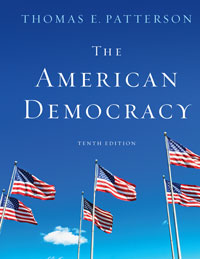 
The American Democracy, 10th Edition (Patterson)Chapter 16:
Welfare and Education Policy: Providing for Personal Security and NeedChapter Overview
This chapter examines the problems that federal social welfare programs are designed to alleviate and describes how these programs operate. It also addresses public education policies. This chapter seeks to provide an informed basis for understanding issues of social welfare and education and to show why disagreements in these areas are so substantial. The issues involve hard choices that inevitably require trade-offs between federal and state power and between the values of individual self-reliance and egalitarian compassion. The main points of this chapter are as follows:
- Poverty is a large and persistent problem in America, affecting about one in seven Americans, including many of the country’s most vulnerable—children, female-headed families, and minority-group members.
- Welfare policy has been a partisan issue, with Democrats taking the lead on government programs to alleviate economic insecurity and Republicans acting to slow down or qualify these initiatives.
- Social welfare programs are designed to reward and foster self-reliance or, when this is not possible, to provide benefits only to those individuals who are truly in need. U.S. welfare policy is not based on the assumption that every citizen has a right to material security.
- Americans favor social insurance programs (such as social security) over public assistance programs (such as food stamps). As a result, most social welfare expenditures are not targeted toward the nation’s neediest citizens.
- A prevailing principle in the United States is equality of opportunity, which in terms of policy is most evident in the area of public education. America invests heavily in its public schools and colleges.
 |  |
|

















